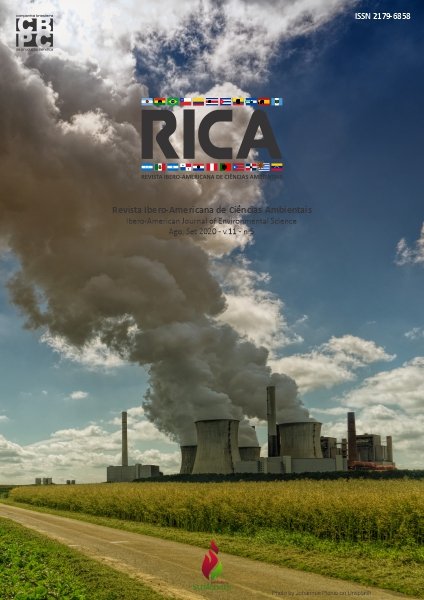Biophysical parameters analysis in the detection of coverage changes and land use in a conservation unit in the Brazilian Pantanal
DOI:
https://doi.org/10.6008/CBPC2179-6858.2020.005.0059Keywords:
Pantanal, Conservation unit, Biophysical parametersAbstract
In order to preserve the Private Reserve of SESC Pantanal Natural Heritage (RPPN) was established in 1997. The physiognomies there show rapid transitions, which makes it difficult to classify land use and complex dynamics of the flood regime. Therefore, the object of this work was to evaluate the temperature dynamics and biophysical parameters in a reserve in the Brazilian Pantanal. Precipitation data and images from the Landsat 5 satellite were used to compute biophysical parameters. Our results demonstrate that the largest area is occupied by shrubby vegetation, followed by pasture, cambarazal and murundus fields. The albedo, the surface temperature, and the NDVI showed significant differences over the studied period and in the dry and rainy seasons. The vegetation indices showed the highest values in the years of 1989 during the rainy season, while the highest values of albedo and surface temperature were obtained a decade later, periods that precede the formation and expansion of the RPPN SESC-Pantanal. The LAI did not show any significant difference between the entire period studied and between the dry and rainy seasons, which demonstrates that most of the vegetation maintained during the period of formation, expansion and preservation of the RPPN.
Downloads
Downloads
Published
Issue
Section
License
The CBPC - Companhia Brasileira de Produção Científica (Brazil CNPJ: 11.221.422/0001-03) the material rights of the published works. The rights relate to the publication of the work anywhere in the world, including rights to renewals, expansions and dissemination of the contribution, as well as other subsidiary rights. All electronically published works may subsequently be published in printed collections under the coordination of this company and / or its partners. The authors preserve the copyright, but are not allowed to publish the contribution in another medium, printed or digital, in Portuguese or in translation.









